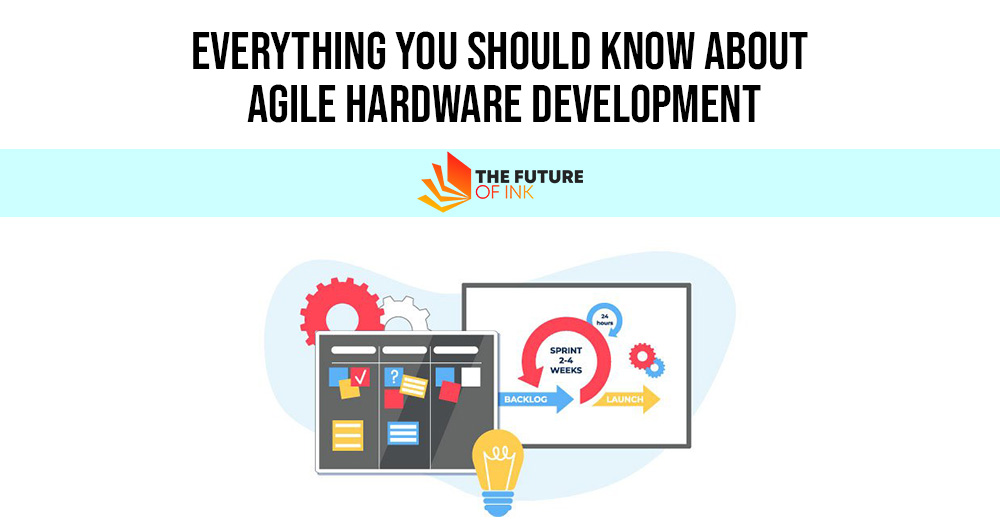Lots of people wonder whether agile processes can be used for hardware development. Indeed, experienced developers know very well that those tools, techs, and methodologies that work pretty well for software development might prove ineffective if extrapolated to hardware development practices.

In this article, we attempt to answer the question of whether agile practices can bring the same benefits to hardware development as to software development.
- You can find more useful articles on hardware development at https://sirinsoftware.com/services/hardware_development/
Contents
Major Differences
Software and hardware have a lot of differences in terms of development, utilization, maintenance, etc. So, let’s review the key differences which you might want to take note of before adopting some cool agile techniques.
Hardware is hard. This means that once manufactured, it’s really difficult to get change or make tweaks to, whereas software is more malleable and less expensive to design.
It’s also important to keep in mind that software solutions can evolve along with emerging technologies.
Updates and patches make it possible for your software products to live long and operate as intended, which is obviously not the case with their hardware counterparts. Hardware components are more rigid and cannot get new capabilities after manufacturing without a considerable overhaul.
What’s more, one needs to make architectural decisions prior to building their hardware solutions relative to software development.
Also Read: Expect the Unexpected: How to Prepare Yourself for Possible Market Disruptions?
Major Similarities
That being said, there are some indisputable similarities between software and hardware solutions you might want to take note of, as well.
Both hardware and software products are created with a certain purpose in mind. And their components behave quite similarly. Once your product is ready, users start interacting with it, its components start interacting with other components, which ultimately culminates in intended outputs.
Both software and hardware products have functional requirements, like data manipulation, calculations, etc, and non-functional requirements, also known as quality attributes, which involve security, performance requirements, etc.
Finally, you cannot deny that both your software and hardware products represent a complex system, which should be maintained carefully to operate properly.
Tips to Use Agile for Your Hardware Development Projects
And now that you’ve learned more about the key differences and similarities between the two types of products, we can go back and answer the main question ‘What is the role of agile in hardware development?’
Experts note that agile methodologies can go a long way in helping manufacturers improve their products’ performance, provided that useful functionalities are implemented in small increments over a specified period.
This might prove quite time-consuming, labor-intense, and expensive for the majority of software manufacturers. But you still can apply agile concepts to hardware development, if you opt for the right approach.
As you might know, your hardware development cycle consists of several steps or quantifiable deliverables, which essentially are functionalities your product can provide upon the completion of a certain stage.
In software development, deliverables come in the form of new useful features that will eventually make up your final product. Such features are developed faster than their hardware counterparts, which allows saving valuable time and costs.
Though you cannot expect a steady flow of deliverables when working on your hardware product, you can still apply agile methods to get the most out of the process. You can conduct functional testing throughout the development cycle.
Once you spot a bug or any other problem, you will be able to make the necessary adjustments before the planned shipment. And that’s the main point. Not only can this tactic help you identify possible problems early, but also save your time and money.
Furthermore, you want to apply Scrum practices throughout the hardware development process.
Unlike the software development lifecycle, where your deliverables can be broken down into more manageable components, the hardware development process isn’t that predictable and decomposable.
So, if you decide to apply the Scrump techniques for your hardware development projects, you’ll need to tweak the length of your Sprints based on the specific needs of your project and resource availability.
Pay special attention to integration testing, which should be conducted throughout the process. The final integration testing should be completed at the Hardening Sprint stage, as well as other activities which couldn’t be done earlier.
Finally, you should remember that due to its peculiarities, e.g., lack of flexibility, high cost of change, and longer development times, so more of the design work is done upfront, relative to the software-design work, which is more JIT-oriented and is done only when the need arises.
Also Read: The Benefits of Going Paperless for Your Business
Above are only some of the most important thoughts about the benefits agile hardware development can bring to your business. Scrum practices can be a great fit for your hardware development if adopted and adapted wisely.




